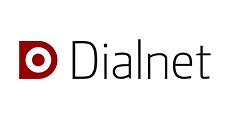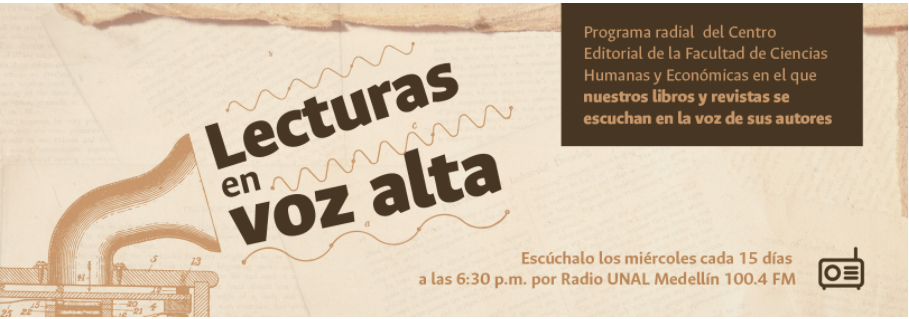Behavioral Insights for Better Public Communication in Health Crisis
Ideas conductuales para mejorar la comunicación pública en las crisis sanitarias
Ideias comportamentais para melhorar a comunicação pública em crises de saúde
DOI:
https://doi.org/10.15446/ede.v33n63.103215Palabras clave:
Behavioral biases, Crisis communication, COVID-19, Framing, Population targeting, Social norms, Attitudes Scale (en)Sesgos conductuales, comunicación de crisis, COVID-19, encuadre, población destinataria, normas sociales, escala de actitudes (es)
vieses comportamentais, comunicação de crise, COVID-19, enquadramento, população-alvo, normas sociais, escala de atitude (pt)
Descargas
Amidst the COVID-19 pandemic, effective public communication became of utmost importance. This is especially true for the time after the easing of lockdowns, which meant an increased emphasis on personal responsibility and adoption of self-care measures. We conducted an experiment that tested three behavioral tools for communication —framing, population targeting, and social norms— to assess behavioral biases that pose a barrier to effective communication efforts and provide useful information for governments to use in crisis situations. In order to measure the effectiveness of the various communication features, we relied on an Attitudes Scale developed and tested for this purpose.
En medio de la pandemia de COVID-19, la comunicación pública efectiva se volvió de suma importancia. Esto es especialmente cierto para el tiempo posterior a la relajación de los bloqueos, lo que significó un mayor énfasis en la responsabilidad personal y la adopción de medidas de autocuidado. Se llevó a cabo un experimento que probó tres herramientas conductuales para la comunicación —encuadre, focalización de mensajes y normas sociales— a fin de evaluar los sesgos conductuales que representan una barrera para los esfuerzos de comunicación efectivos y brindan información útil para que los gobiernos la utilicen en situaciones de crisis. Para evaluar la efectividad de las diversas medidas de comunicación, nos basamos en una escala de actitudes desarrollada y probada para este propósito.
Em meio à pandemia da COVID-19, a comunicação pública eficaz tornou-se fundamental. Isso é especialmente verdadeiro no período após o relaxamento dos bloqueios, o que significou uma maior ênfase na responsabilidade pessoal e na adoção de medidas de autocuidado. Um experimento que testou três ferramentas de comunicação comportamental - enquadramento, direcionamento de mensagens e normas sociais - foi conduzido para avaliar os vieses comportamentais que representam uma barreira aos esforços de comunicação eficazes e fornecer informações úteis para os governos usarem em situações de crise. Para avaliar a eficácia de várias medidas de comunicação, contamos com uma escala de atitude desenvolvida e testada para esse fim.
Referencias
Alsan, M., Stanford, F. C., Banerjee, A., et. al. (2021). Comparison of knowledge and information-seeking behavior after general COVID-19 public health messages and messages tailored for black and latinx communities: a randomized controlled trial. Annals of Internal Medicine, 174(4), 484-492. https://doi.org/10.7326/M20-6141
Andia, T., Criado, L., Mantilla, C., Molano, A., & Lesmes, P. R. (2022). Capítulo 10: Relación entre las medidas para mitigar la propagación del Covid-19 y los patrones de actividad laboral y salud mental en Colombia. In D. Cortés, C. M. Posso-Suárez, M. Villamizar Villegas, & Banco de la República (eds.), Covid-19 consecuencias y desafíos en la economía colombiana. Una mirada desde las universidades (pp. 193-208). Banco de la República. https://repositorio.banrep.gov.co/handle/20.500.12134/10319
Banerjee, A., Alsan, M., Brezas, E., Chandrsekhar, A. G., Chowdhury, A., Duflo, E., & Goldsmith-Pinhamil, P. (2020). Messages on COVID-19 prevention in India increased symptoms reporting and adherence to preventine behaviors among 25 million recipients with similar effects on non-recipient members of their communities. NBER. DOI: https://doi.org/10.3386/w27496
Blackman, A., & Hoffmann, B. (2022). Diminishing Returns: Nudging Covid-19 Prevention among Colombian Young Adults. Plos one, 17(12), e0279179.https://doi.org/10.1371/journal.pone.0279179
Busso, M., Camacho, J., Messina, J., & Montenegro, G. (2020). Social Protection and Informality in Latin America during the COVID-19 Pandemic [IDB Working Paper Series]. Inter American Development Bank. DOI: https://doi.org/10.18235/0002865
Celis, L. (2022). La comunicación de gobierno al servicio de los propósitos cívicos: Un estudio sobre el impacto de los encuadres temáticos y estratégicos en los comunicados de prensa gubernamentales [tesis de doctorado, Universidad del Norte]. https://manglar.uninorte.edu.co/handle/10584/10761#page=1
Delaporte, I., & Peña, W. (2020). Working from Home Under COVID-19: Who Is Affected? Evidence from Latin American and Caribbean Countries [GLO Discussion Paper, No. 528]. Global Labor Organization. https://ideas.repec.org/p/zbw/glodps/528.html
Denegri, M., Sepúlveda, J., Demaría, M., Sandoval-Escobar, M., Silva, F., Van Der Woude, D., Quintano, F., & Riquelme, L. (2022). Financial and Consumption Habits and Behaviors during the COVID-19 Pandemic: A Short-Term Study of Argentina, Chile and Colombia. Revista de Cercetare si Interventie Sociala, 76, 18-33. https://dialnet.unirioja.es/servlet/articulo?codigo=8388278 DOI: https://doi.org/10.33788/rcis.76.2
Egan, M., Perera, D., Xu, Y., & Mottershaw, A. (2020, 29th May). Don’t say it makes you “immune” – how you frame coronavirus antibody results matters. The Behavioral Insights Team Blog. https://www.bi.team/blogs/dont-say-it-makes-you-immune-how-you-frame-coronavirus-anitbody-results-matters/
Gallagher, K. M., & Updegraff, J. A. (2012). Health Message Framing Effects on Attitudes, Intentions, and Behavior: A Meta-analytic Review. Annals of Behavioral Medicine. DOI: https://doi.org/10.1007/s12160-011-9308-7
Gantiva, C., Jiménez-Leal, W., & Urriago-Rayo, J. (2021). Framing Messages to Deal With the COVID-19 Crisis: The Role of Loss/Gain Frames and Content. Frontiers in Psychology, 12, 568212. https://doi.org/10.3389/fpsyg.2021.568212
Hair, J. F., Gabriel, M., Silva, D. d., & Braga, S. (2019). Development and Validation of Attitudes Measurement Scales: Fundamental and Practical Aspects. RAUSP Management Journal, 54 (4), 490-507. https://doi.org/10.1108/RAUSP-05-2019-0098
Halilova, J. G., Fynes-Clinton, S., Green, L., Myerson, J., Wu, J., Ruggeri, K., Addis, D. R., & Rosenbaum, R. S. (2022). Short-Sighted Decision-Making by Those Not Vaccinated against COVID-19. Scientific Reports, 12 (1), 11906. https://doi.org/10.1038/s41598-022-15276-6
Hortal, A. (2022). Nudges: A Promising Behavioral Public Policy Tool to Reduce Vaccine Hesitancy. Revista Brasileira de Políticas Públicas, 12 (1) https://doi.org/10.5102/rbpp.v12i1.7993
Kalichman, S., & Eaton, L. (2020). Social and Behavioral Health Responses to COVID-19: Lessons Earned from Four Decades of an HIV Pandemic. Journal of Behavioral Medicine, 43 (3), 341–345. https://doi.org/10.1007/s10865-020-00157-y
Khadzhyradieva, S., Hrechko, T., & Smalskys, V. (2019). Institutionalisation of Behavioural Insights in Public Policy. Public policy and Administration, 18(3), 95-113. https://doi.org/10.5755/j01.ppaa.18.3.24726
Kluwe, B., Wendt, T., Poitevin, L., Castro, S. C., Kristensen, C. H., Costa, J., & Grassi-Oliveira, R. (2021). A Behavioral Economic Risk Aversion Experiment in the Context of the COVID-19 Pandemic. PLoS ONE, 16 (1). e0245261. https://doi.org/10.1371/journal.pone.0245261
Lunn, P., Belton, C., Lavin, C., McGowan, F., Timmons, S., & Robertson, D. (2020). Using Behavioral Science to Help Fight the Coronavirus. Journal of Behavioral Public Administration, 3(1), 1-15. https://doi.org/10.30636/jbpa.31.147
Martínez, D., Rojas, A. M., & Scartascini, C. (2020). La economía del comportamiento puede ayudar a combatir el coronavirus [Resumen de Políticas IDB, No. IDB-PB-334.] Inter American Development Bank. http://dx.doi.org/10.18235/0002315
Metcalf, J., & Haushofer, J. (2020). Combining Behavioral Economics and Infectious Disease Epidemiology to Mitigate the COVID-19 Outbreak [Princeton Working Paper]. https://www.semanticscholar.org/paper/Combining-Behavioral-Economics-and-Infectious-to-Haushofer/0c45871b37aef647a903fe5d69f183583412b897
Milkman, K. L., Gandhi, L., Patel, M.S., Graci, H., Gromet, D. N., Ho, H., Kay, J. S., Lee, T. W., Rothschild, J., Bogard, J. E., Body, I., Chabris, C. F., Chang, E., Champan, G., Dannals, J. E., Goldstein, N. J., Goren, A., Hershfield, H., Hirsch, A…, & Duckworth, A. L. (2022). A 680,000-Person Megastudy of Nudges to Encourage Vaccination in Pharmacies. Proceedings of the National Academy of Sciences of the United States of America, 119 (6). https://doi.org/10.1073/pnas.2115126119
Organization for Economic Cooperation and Development (OECD). (2017). Behavioural Insights and Public Policy: Lessons from Around the World. OECD Publishing. http://dx.doi.org/10.1787/9789264270480-en
Organization for Economic Cooperation and Development (OECD). (2019). Tools and Ethics for Applied Behavioural Insights: The BASIC Toolkit. OECD Publishing. https://doi.org/10.1787/9ea76a8f-en
Perez, M. (n. d.). When Social Distancing Is Impossible: Humanitarian Crises and Human Behavior. Ideas24. Accessed on April 15st 2021. https://www.ideas42.org/blog/social-distancing-impossible-humanitarian-crises-human-behavior/
Soofi, M., Najafi, F., & Karami-Matin, B. (2020). Using Insights from Behavioral Economics to Mitigate the Spread of COVID-19. Applied Health Economics and Health Policy, 18, 345–350. https://doi.org/10.1007/s40258-020-00595-4
Tagliaferri, G., Xu, Y., & Roy-Chowdhury, V. (2020, 23rd March). Bright infographics & minimal text make handwashing posters most effective – result from an online experiment. The Behavioral Insights Team Blog. https://www.bi.team/blogs/bright-infographics-and-minimal-text-make-handwashing-posters-most-effective/
Tantia, P., & Perez, M. (n. d.). The Behavioral Side of COVID-19. Ideas42. Accessed on October 30th 2023. https://www.ideas42.org/blog/the-behavioral-side-of-COVID-19/
Uribe-Mallarino, C. (2008). Estratificación social en Bogotá: de la política pública a la dinámica de la segregación social. Universitas Humanistica, 65 (65). https://revistas.javeriana.edu.co/index.php/univhumanistica/article/view/2245
Van Bavel, J. J., Baicker, K., Boggio, P. S., Capraro, V., Cichocka, A., Cikara, M., Crockett, M. J., Crum, A. J., Douglas, K. M., Druckman, J. N., Drury, J., Dube, O., Ellemers, N., Finkel, E., Fowler, J., H., Gelfand, M., Han, S., Haslam, S. A., Jetten, J…, Willer, R. (2020). Using Social and Behavioural Science to Support COVID-19 Pandemic Response. Nature Human Behavior, 4, 460–471. https://doi.org/10.1038/s41562-020-0884-z
Cómo citar
APA
ACM
ACS
ABNT
Chicago
Harvard
IEEE
MLA
Turabian
Vancouver
Descargar cita
Licencia

Esta obra está bajo una licencia internacional Creative Commons Atribución-NoComercial-SinDerivadas 4.0.
Se autoriza la reproducción sin ánimo de lucro de los materiales, citando la fuente.



























